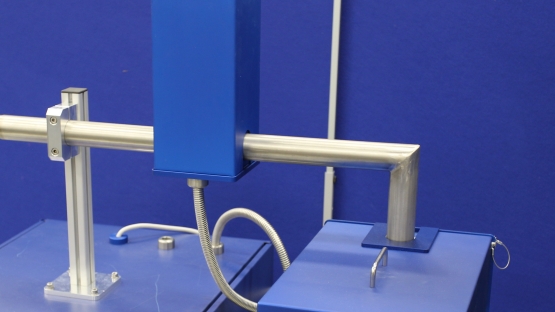Meet the new 24/7 high-tech device that will monitor Iran’s uranium enrichment activities at the Natanz Fuel Enrichment Plant, helping to provide the world with assurance that Iran fulfils its nuclear-related commitments.
The IAEA has installed the Online Enrichment Monitor, or OLEM, to verify that Iran keeps its level of uranium enrichment at up to 3.67% as committed under the Joint Comprehensive Plan of Action (JCPOA). “The agreed limitations on all uranium enrichment and related activities, including on specific Research and Development activities will allow Iran to use nuclear technology for peaceful purposes,” said Massimo Aparo, head of the IAEA’s Iran Task Force.
The JCPOA was agreed last July between Iran and China, France, Germany, Russia, the United Kingdom, the United States and the European Union, the so called E3/EU+3. The IAEA, which itself is not party to the JCPOA, is undertaking a wide range of verification and monitoring of nuclear-related commitments set out in the document.
The monitor was installed by the IAEA as part of preparatory work ahead of the JCPOA’s Implementation Day, when the IAEA verified that Iran had completed its nuclear-related commitments specified in the JCPOA. It allows the IAEA to measure the amount of uranium-235 and the total amount of uranium in the gas centrifuge facility in Natanz, and to calculate the enrichment level. The new device enables around-the-clock monitoring of the facility, which could previously only be verified by inspectors on-site taking samples and indirectly through the collection of environmental samples, Aparo said.
From three weeks to real-time monitoring
Traditional methods of sampling and analysis can take three weeks or longer, mostly because of the time it takes to ship the sample from Iran to the IAEA’s laboratories in Austria. The IAEA already had plans to develop a tool for real-time monitoring of enrichment levels in gas centrifuge enrichment plants under IAEA safeguards, Aparo said. With the support of Member States, it has accelerated the development of the technology in light of the JCPOA requirement, he added.
The online enrichment monitor will be used in conjunction with some traditional sampling and analysis at the IAEA’s laboratories because they can provide even more precise results, albeit with some delay, Aparo said.
Following its debut in Iran this month, the IAEA will gradually roll out the Online Enrichment Monitor to gas centrifuge enrichment plants in other countries. Since the new technology provides continuous measurement, sample taking and environmental sampling will be reduced, resulting in efficiency gains and cost savings for the IAEA.
How it works
The online enrichment monitor measures the characteristics of gaseous uranium – UF6 – flowing through the processing pipes out of the cascades of centrifuges of the enrichment plant. In each unit of the equipment, the main connection node, a gamma ray detector based on a sodium iodide crystal, measures the amount of U-235 in the pipe, while pressure and temperature sensors enable the machine to determine the total quantity of gaseous uranium. From the two, the device can calculate the enrichment level, which can be checked by inspectors on the site. The device can be installed in a configuration to monitor the enrichment levels of the material coming in and out of the gas enrichment centrifuges cascades.
Because the device is non-intrusive and does not use a radioactive source, it is safe to maintain and can work autonomously. The device is tamper-indicating and is connected to a computer contained in a central cabinet on the site, which is also tamper indicating and under the IAEA’s seal. The computer performs calculations, stores results and transmits encrypted data.
The OLEM system includes multiple redundancy components and can operate on battery power, further ensuring its autonomy and reliability. All its components are contained in sealed boxes that are connected by special tubing and all enclosures are under IAEA seal. A special paint is used to ensure that any attempt to tamper with the system will be noticed.
The IAEA’s work in Iran will benefit from the very latest technology to ensure effective and efficient verification and monitoring, Aparo said.







